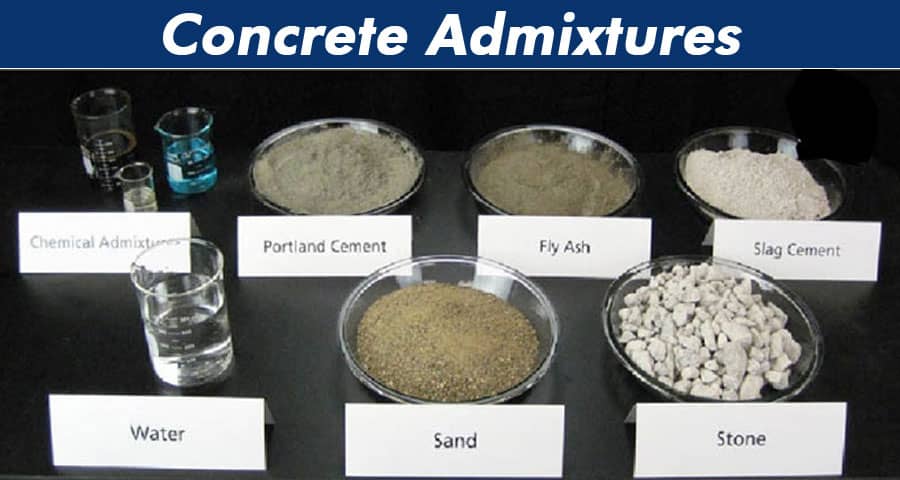Exploring Concrete Admixtures: Enhancing Strength and Durability

Concrete is the backbone of modern construction, providing the sturdy foundation upon which our built environment rests. But what if we told you there's more to concrete than meets the eye? Concrete admixtures are the secret ingredients that can transform ordinary concrete into a material with enhanced properties, from increased strength to improved workability.
Understanding Concrete Admixtures
What Are Concrete Admixtures?
Concrete admixtures are chemicals added to concrete during mixing to modify its properties. These additives can alter the consistency, setting time, strength, and durability of concrete, allowing for greater flexibility in construction projects. From speeding up the curing process to reducing water content, admixtures offer a range of benefits that enhance both the performance and workability of concrete.
Types of Concrete Admixtures
- Water-Reducing Admixtures: Also known as plasticizers, these admixtures reduce the water content required in concrete mixtures without compromising workability. By decreasing water-cement ratios, water-reducing admixtures enhance strength and durability while improving concrete's flowability.
- Set-Retarding Admixtures: These additives slow down the hydration process of concrete, extending its setting time. Set-retarding admixtures are particularly useful in large-scale projects where extended workability is required, allowing for better placement and finishing of concrete.
- Accelerating Admixtures: On the flip side, accelerating admixtures expedite the setting and curing of concrete, making it suitable for cold weather construction or projects with tight deadlines. By promoting early strength development, these admixtures ensure timely project completion without compromising quality.
- Air-Entraining Admixtures: In regions prone to freeze-thaw cycles, air-entraining admixtures are essential for improving concrete's resistance to damage caused by expansion and contraction. By creating tiny air bubbles within the concrete mixture, these admixtures enhance its durability and longevity.
- Superplasticizers: Sometimes referred to as high-range water reducers, superplasticizers offer extreme water reduction capabilities, allowing for substantial improvement in concrete's workability and strength. These admixtures are ideal for producing high-strength concrete mixes with reduced water content.
Applications of Concrete Admixtures
- Residential Construction: In residential construction, concrete admixtures play a crucial role in enhancing the quality and durability of structures. From foundations to driveways, admixtures can improve concrete's performance in various applications, ensuring long-lasting results that withstand the test of time.
- Commercial Projects: In the realm of commercial construction, where deadlines are tight and quality is paramount, concrete admixtures offer a competitive edge. By accelerating curing times or improving workability, these additives enable contractors to meet project deadlines while delivering superior results that meet or exceed industry standards.
- Infrastructure Development: Infrastructure projects, such as bridges, highways, and dams, demand concrete solutions that can withstand heavy loads and environmental stresses. With the use of advanced admixtures, engineers can optimize concrete mixes for specific applications, ensuring the longevity and structural integrity of critical infrastructure projects.
Benefits of Using Concrete Admixtures
- Improved Workability: Admixtures can enhance the flow and consistency of concrete, making it easier to handle and place, even in challenging conditions.
- Increased Strength: By optimizing the hydration process, admixtures can improve the compressive and flexural strength of concrete, resulting in structures that are stronger and more durable.
- Enhanced Durability: Admixtures can improve concrete's resistance to weathering, chemical attacks, and other forms of deterioration, prolonging the lifespan of structures.
- Cost Savings: Through the use of admixtures, contractors can achieve better results with less material, reducing construction costs and maximizing efficiency.
- Sustainability: Some admixtures are formulated to reduce the environmental impact of concrete production, making it a more sustainable building material choice.
Conclusion
In conclusion, concrete admixtures are invaluable tools for enhancing the performance and versatility of concrete in construction projects of all scales. By understanding the different types of admixtures available and their respective benefits, contractors and engineers can optimize concrete mixes to meet specific project requirements while achieving superior results.
